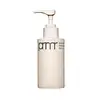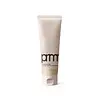What's inside
What's inside
 Key Ingredients
Key Ingredients

No key ingredients
 Benefits
Benefits

 Concerns
Concerns

 Ingredients Side-by-side
Ingredients Side-by-side

Water
Skin ConditioningGlycerin
HumectantSteartrimonium Methosulfate
Acrylates/C10-30 Alkyl Acrylate Crosspolymer
Emulsion StabilisingIsopropyl Alcohol
SolventDistearyldimonium Chloride
Limonene
PerfumingCocamidopropyl Betaine
CleansingButylene Glycol
HumectantParfum
MaskingLinalool
PerfumingSodium Chloride
MaskingBrassica Oleracea Italica Extract
AstringentSodium Benzoate
MaskingPhyllanthus Emblica Fruit Extract
HumectantBarm Extract
Skin ConditioningSeahorse Extract
Skin ConditioningFragaria Ananassa Fruit Extract
Skin ConditioningPolyglycerin-3
HumectantPhenoxyethanol
PreservativeDisodium EDTA
Water, Glycerin, Steartrimonium Methosulfate, Acrylates/C10-30 Alkyl Acrylate Crosspolymer, Isopropyl Alcohol, Distearyldimonium Chloride, Limonene, Cocamidopropyl Betaine, Butylene Glycol, Parfum, Linalool, Sodium Chloride, Brassica Oleracea Italica Extract, Sodium Benzoate, Phyllanthus Emblica Fruit Extract, Barm Extract, Seahorse Extract, Fragaria Ananassa Fruit Extract, Polyglycerin-3, Phenoxyethanol, Disodium EDTA
Water
Skin ConditioningGlycerin
HumectantDisodium Cocoyl Glutamate
CleansingLauryl Hydroxysultaine
CleansingCellulose
AbsorbentAcrylates Copolymer
Coco-Glucoside
CleansingDecyl Glucoside
CleansingSodium Chloride
Masking1,2-Hexanediol
Skin ConditioningCitric Acid
BufferingLactobacillus Ferment Lysate
Skin ConditioningTromethamine
BufferingSalicylic Acid
MaskingButylene Glycol
HumectantHouttuynia Cordata Powder
Skin ConditioningLimonene
PerfumingPolyquaternium-10
Ethylhexylglycerin
Skin ConditioningDipotassium Glycyrrhizate
HumectantAllantoin
Skin ConditioningGeraniol
PerfumingHyaluronic Acid
HumectantMadecassoside
AntioxidantGluconolactone
Skin ConditioningCitrus Nobilis Peel Oil
MaskingPogostemon Cablin Leaf Oil
MaskingPelargonium Graveolens Flower Oil
MaskingCitrus Aurantium Bergamia Fruit Oil
MaskingChamomilla Recutita Flower Oil
MaskingCymbopogon Martini Oil
MaskingCitrus Aurantium Dulcis Peel Extract
Emulsion StabilisingLavandula Angustifolia Oil
MaskingGlycine Max Oil
EmollientPropanediol
SolventRicinus Communis Seed Oil
MaskingCeramide NP
Skin ConditioningRosmarinus Officinalis Leaf Oil
MaskingSodium Hyaluronate
HumectantPhytosphingosine
Skin ConditioningHydrogenated Lecithin
EmulsifyingRosa Damascena Flower Oil
MaskingTocopherol
AntioxidantHydrolyzed Hyaluronic Acid
HumectantSodium Hyaluronate Crosspolymer
HumectantCanola Oil
EmollientRosmarinus Officinalis Leaf Extract
AntimicrobialSodium Acetylated Hyaluronate
HumectantWater, Glycerin, Disodium Cocoyl Glutamate, Lauryl Hydroxysultaine, Cellulose, Acrylates Copolymer, Coco-Glucoside, Decyl Glucoside, Sodium Chloride, 1,2-Hexanediol, Citric Acid, Lactobacillus Ferment Lysate, Tromethamine, Salicylic Acid, Butylene Glycol, Houttuynia Cordata Powder, Limonene, Polyquaternium-10, Ethylhexylglycerin, Dipotassium Glycyrrhizate, Allantoin, Geraniol, Hyaluronic Acid, Madecassoside, Gluconolactone, Citrus Nobilis Peel Oil, Pogostemon Cablin Leaf Oil, Pelargonium Graveolens Flower Oil, Citrus Aurantium Bergamia Fruit Oil, Chamomilla Recutita Flower Oil, Cymbopogon Martini Oil, Citrus Aurantium Dulcis Peel Extract, Lavandula Angustifolia Oil, Glycine Max Oil, Propanediol, Ricinus Communis Seed Oil, Ceramide NP, Rosmarinus Officinalis Leaf Oil, Sodium Hyaluronate, Phytosphingosine, Hydrogenated Lecithin, Rosa Damascena Flower Oil, Tocopherol, Hydrolyzed Hyaluronic Acid, Sodium Hyaluronate Crosspolymer, Canola Oil, Rosmarinus Officinalis Leaf Extract, Sodium Acetylated Hyaluronate
 Reviews
Reviews

Ingredients Explained
These ingredients are found in both products.
Ingredients higher up in an ingredient list are typically present in a larger amount.
Butylene Glycol (or BG) is used within cosmetic products for a few different reasons:
Overall, Butylene Glycol is a safe and well-rounded ingredient that works well with other ingredients.
Though this ingredient works well with most skin types, some people with sensitive skin may experience a reaction such as allergic rashes, closed comedones, or itchiness.
Learn more about Butylene GlycolGlycerin is already naturally found in your skin. It helps moisturize and protect your skin.
A study from 2016 found glycerin to be more effective as a humectant than AHAs and hyaluronic acid.
As a humectant, it helps the skin stay hydrated by pulling moisture to your skin. The low molecular weight of glycerin allows it to pull moisture into the deeper layers of your skin.
Hydrated skin improves your skin barrier; Your skin barrier helps protect against irritants and bacteria.
Glycerin has also been found to have antimicrobial and antiviral properties. Due to these properties, glycerin is often used in wound and burn treatments.
In cosmetics, glycerin is usually derived from plants such as soybean or palm. However, it can also be sourced from animals, such as tallow or animal fat.
This ingredient is organic, colorless, odorless, and non-toxic.
Glycerin is the name for this ingredient in American English. British English uses Glycerol/Glycerine.
Learn more about GlycerinLimonene is a fragrance that adds scent and taste to a formulation.
It's found in the peel oil of citrus fruits and other plants such as lavender and eucalyptus. The scent of limonene is generally described as "sweet citrus".
Limonene acts as an antioxidant, meaning it helps neutralize free radicals.
When exposed to air, oxidized limonene may sensitize the skin. Because of this, limonene is often avoided by people with sensitive skin.
The term 'fragrance' is not regulated in many countries. In many cases, it is up to the brand to define this term. For instance, many brands choose to label themselves as "fragrance-free" because they are not using synthetic fragrances. However, their products may still contain ingredients such as essential oils that are considered a fragrance.
Learn more about LimoneneChances are, you eat sodium chloride every day. Sodium Chloride is also known as table salt.
This ingredient has many purposes in skincare: thickener, emulsifier, and exfoliator.
You'll most likely find this ingredient in cleansers where it is used to create a gel-like texture. As an emulsifier, it also prevents ingredients from separating.
There is much debate on whether this ingredient is comedogenic. The short answer - comedogenic ratings don't tell the whole story. Learn more about comegodenic ratings here.
The concensus about this ingredient causing acne seems to be divided. Research is needed to understand if this ingredient does cause acne.
Scrubs may use salt as the primary exfoliating ingredient.
Learn more about Sodium ChlorideWater. It's the most common cosmetic ingredient of all. You'll usually see it at the top of ingredient lists, meaning that it makes up the largest part of the product.
So why is it so popular? Water most often acts as a solvent - this means that it helps dissolve other ingredients into the formulation.
You'll also recognize water as that liquid we all need to stay alive. If you see this, drink a glass of water. Stay hydrated!
Learn more about Water